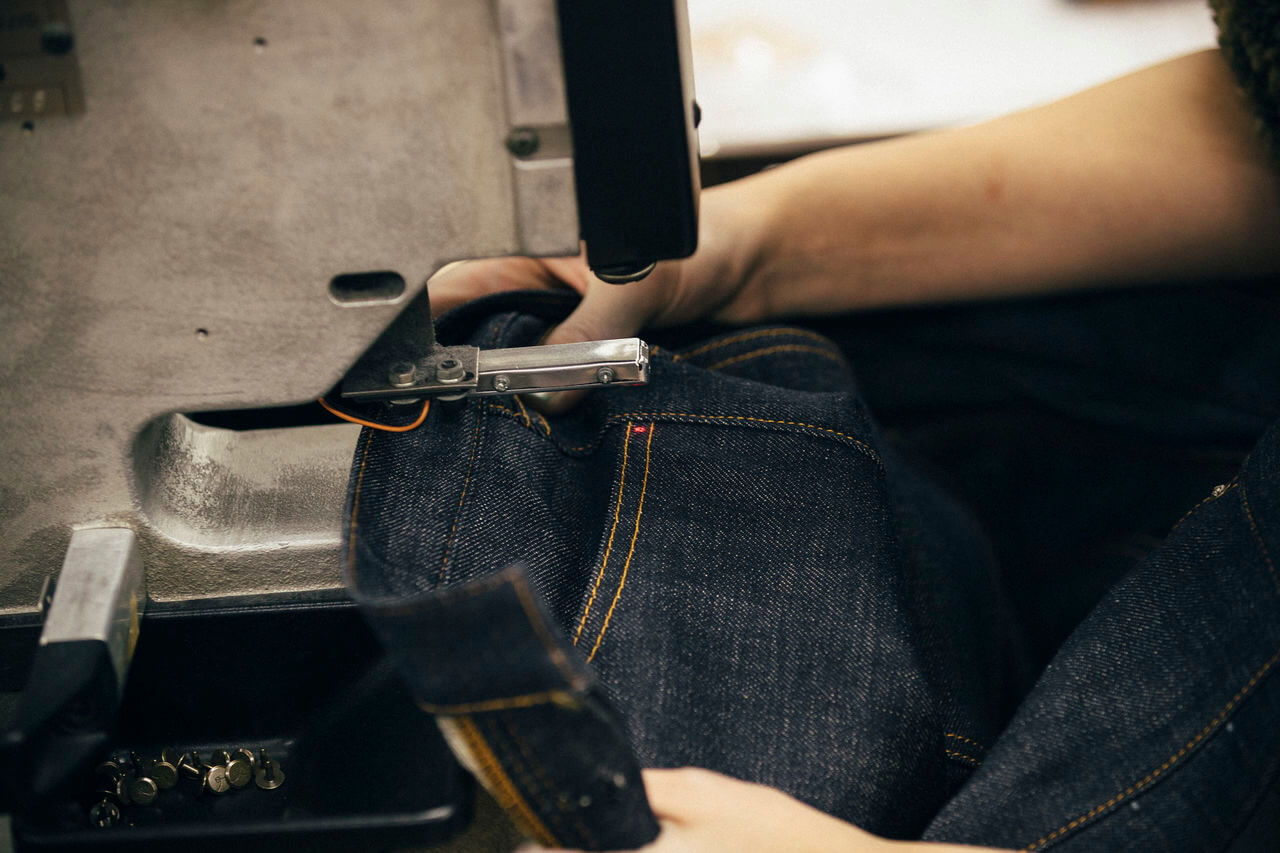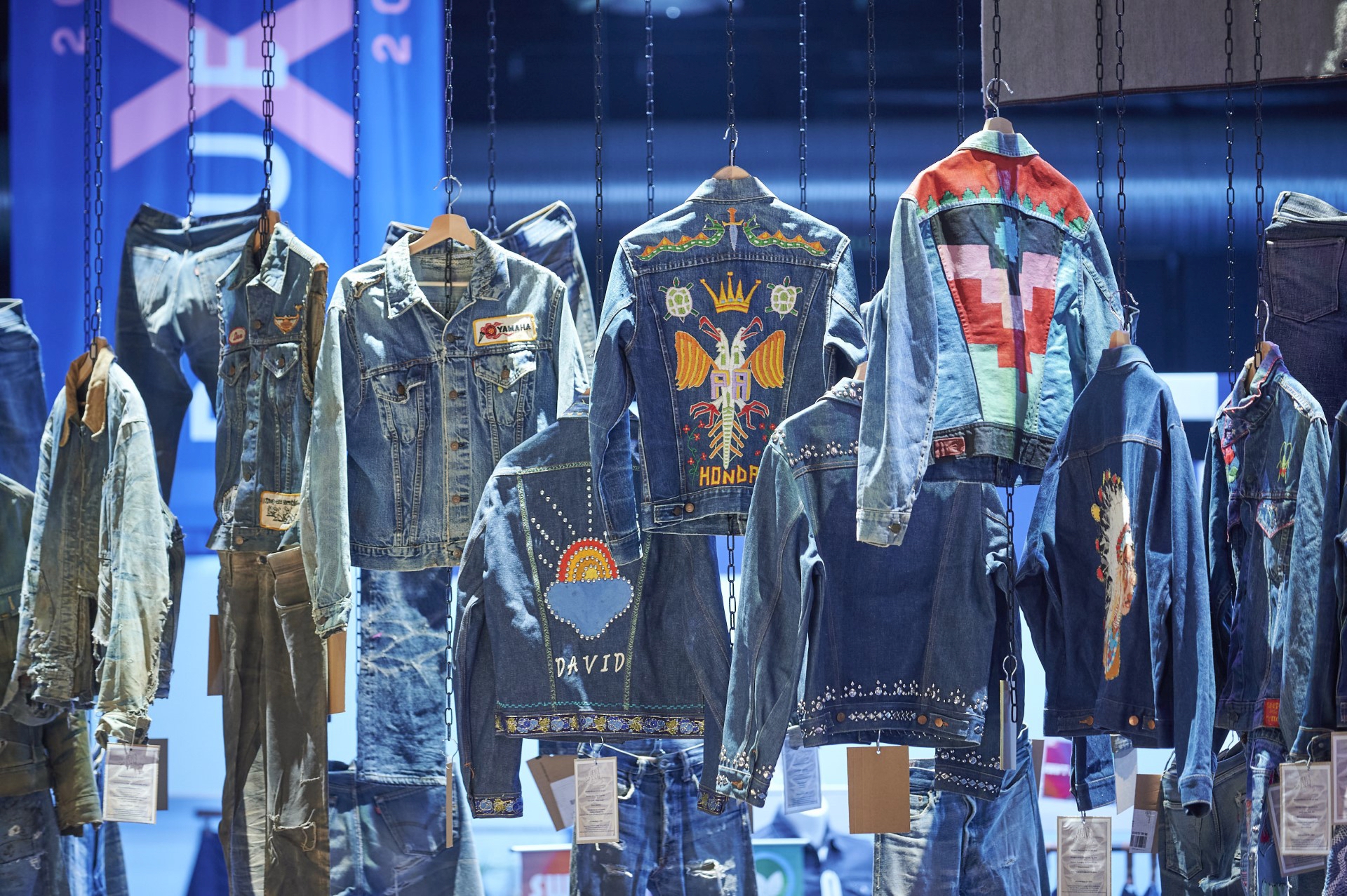Interview with Kishimoto, managing director of Japan Blue, about manufacturing the jeans
A few weeks ago, we had the privilege to have an exciting and extensive conversation with Kishimoto about the processes behind the scenes at Japan Blue Jeans. We have come to fascinating insights about how things work at one of the world’s most popular denim brands.
We split the interview into three pieces to make it manageable and readable. In the first part of the conversation we were talking about cotton, and the way it needs to be processed, you can find this part here. Later, we had an interesting discussion about the spinning and weaving process. If, by any chance, you missed this particular part, hit this link, and read the second part of the interview.
Today, in the third and last part of the interview, we will talk about the manufacturing process of the jeans.
Kishimoto will, after a few questions, describe the entire process from rolling out the fabric until a finished pair of jeans hits the store. We are Kishimoto very grateful for his time and interest, and we hope you will enjoy our conversation below.
Robin Denim: Once the fabric is finished, it is ready to be cut and sewn into jeans. Where does the manufacturing of Japan Blue’s items take place?
Kishimoto: Our factory is located in Kojima, in the Okayama prefecture in Japan. It is a small city, but there are many jeans factories. In our factory, 15 people are working on producing garments for Japan Blue. Their activities vary from arranging the fabric and pattern, scheduling shipments, and running the manufacturing. Apart from those 15 people, we have four people for our production control staff at the head office, working on all other tasks except the manufacturing.
 Photo courtesy of Japan Blue Jeans.
Photo courtesy of Japan Blue Jeans.
Robin Denim What is the capacity of the factory? How many garments can you produce in a month?
Kishimoto: The maximum capacity of our factory in Kojima is 5000 pairs of jeans a month. From the 5000 pairs we can produce, we need to make 3000 pairs for Japan Blue to meet our targets and keep our customers satisfied.
Robin Denim: What are the necessary preparations before you can start the production of a new pair of jeans?
Kishimoto: Before we start manufacturing the jeans, we will test the fabric that we intend to use. We will wash the fabric to see how it evolves once it starts fading. As I have already said in the previous interview, there are many influences on how a fabric will eventually fade, for example, the type of indigo and the way it is dyed. When we are satisfied with the result of the wash, we will make the first sample. When the first sample is finished, we will do a thorough check to see how it came out. We examine the fit, the comfort, and the look. If the fit is not good, we need to adjust the measurements until it is precisely the way we want it to be. After the first sample, we will make a second sample, and, if needed, a third and fourth sample until we are completely satisfied. It is possible that even after quite a few samples we still aren’t happy. If that happens, we will reconsider the fit, the design, and the fabric.
Robin Denim: Can you please describe the manufactory process of a pair of jeans? From a roll of fabric until a pair of jeans that is ready to be sold and worn.
Kishimoto: The fabric arrives in large roles in our factory, so the first thing we have to do is unrolling the fabric on the cutting table. Then, we put the paper pattern on the fabric. This is quite a puzzle because we need to reduce the fabric loss as much as possible. Once we finish the puzzling phase, we start cutting the fabric. Before we start sewing all parts into a pair of jeans, we press some certain parts such as the pockets, front parts, etc. We bundle all parts that will be sewn together; this makes the sewing stage much more manageable. Then we start sewing all the different parts together into a pair of jeans. Afterward, we check the sewing, because it should be done perfectly. If the stitch work isn’t perfect, we undo the threads and start all over again. When we are satisfied with all stitches, we undo the jeans from all its unnecessary threads and press the jeans. We will attach the carton tags to the jeans, put them in the packaging bags, and the jeans are ready to be shipped.
 Photo courtesy of Japan Blue Jeans.
Photo courtesy of Japan Blue Jeans.
Robin Denim: What is the most critical part of making a pair of jeans? And what is the hardest part of making jeans?
Kishimoto: The hip parts of a pair of jeans are difficult to sew because these parts are curved. For beginners, it is tough to construct these parts correctly. Another difficult part is sewing the inseam because we sew from the hem of the right leg to the hem of the left leg at once. This is the longest stitch on a pair of jeans, and therefore very difficult.
Robin Denim: What are the typical Japan Blue Jeans signatures in a pair of jeans?
Kishimoto: Of course, we have branded hardware, like for example the buttons and rivets. These are our signatures, but a typical signature is the bright blue thread on the inseam. Another typical Japan Blue signature is that some of our models have our signature stitching on the back pockets.
 Photo courtesy of Japan Blue Jeans.
Photo courtesy of Japan Blue Jeans.
Robin Denim: After the jeans have been cut and sewn, they are finished with hardware. What materials do you use? And how do you attach them to the jeans?
Kishimoto: Our buttons and rivets are made of brass in our factory in Japan. Brass is an alloy of copper and zinc and known for its superior strength and durability. We attach the hardware to the jeans using special machines.
Robin Denim: Did the manufacturing of a pair of jeans change much over the years?
Kishimoto: Most of the machines we use for making our jeans are vintage machines that we’ve used for decades. The machines have become faithful companions over the years, but they aren’t efficient at all. We still use the old machines because they are very reliable and working with them results in less waste. For attaching the rivets, buttons, and belt loops, we use modern devices, which are very efficient compared to their predecessors.
 Photo courtesy of Japan Blue Jeans.
Photo courtesy of Japan Blue Jeans.
Robin Denim: How does your factory stand out from other factories?
Kishimoto: The high quality! At our factory work many veteran craftsmen. They have been working in the business of jeans manufacturing for ages, and their sewing is just perfect! This is our number one asset.
Robin Denim: Once the collection is finished it needs to be distributed to all retailers worldwide, can you please describe this process?
Kishimoto: When we have finished the sample collection, retailers from all over the world can place their orders. We, Japan Blue, travel across the globe to show our latest collection in stores, showrooms, and tradeshows. Once we have received the orders, we will start producing the collection. Once this is finished, we announce that the collection is ready to be shipped to the retailers, and then we ship.
 Photo courtesy of Japan Blue Jeans.
Photo courtesy of Japan Blue Jeans.
 Share
Share
 Tweet
Tweet



